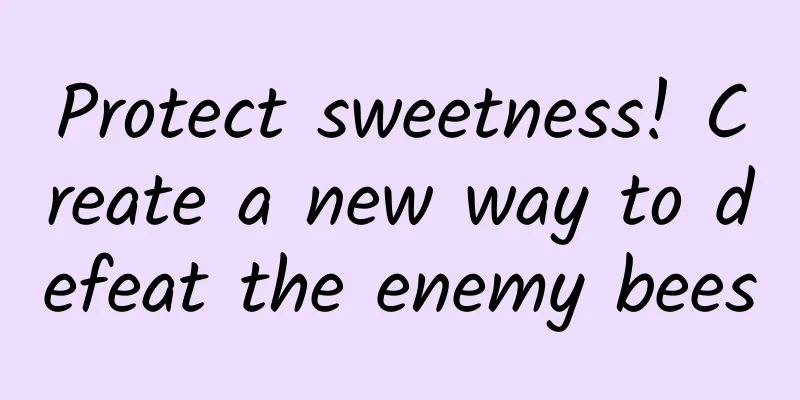Confusing human behavior: Let a snail carry a computer, then kill it after it's done

|
On an August morning, on the island of Tahiti in the middle of the Pacific Ocean, before the sun shone into the canyon, a large snail with a brown shell was strolling lazily when it was suddenly grabbed by a large hand and fiddled with its shell. When the snail struggled to break free from the clutches of the devil, it found a small black block on its shell, which it could not shake off no matter how hard it tried. Life was already so difficult, why add more weight? The snail could only carry the small black block and crawl hard for a whole day, until the afternoon when the sun stopped shining into the canyon, and the familiar big hand appeared again. A big brown snail with a small black patch on its back | Reference [2] "Now I have to take off the thing on my shell..." After the big snail felt the relief on his back, he suddenly felt a darkness in front of his eyes. The killers were serious ecologists. The small black block they installed on the snail was the "smallest computer in the world." What did the snail do wrong? It was fine that it carried a small computer, but why did it lose its life after the incident? The ecologists' confusing behavior was actually to explore the secrets of the survivors of a mass extinction. Mass extinction of snails caused by eating The snail extinction occurred in 1974 when the large brown snail, Euglandina rosea, was introduced to the Society Islands, to which Tahiti belongs. They are natural snail killers. Thirty years after the rose snails arrived on the islands, 52 species of Patulidae snails had been eaten to extinction in the wild by them, and hundreds of native snails from other families were also in danger. Why did we introduce the rose snail? This is actually a "clever trick" of humans to "use snails to kill snails". In 1967, people brought the giant African snail (Achatina fulica) to the Society Islands, where Tahiti is located, as food. The giant African snail is a snail that is larger than the rose snail. In addition to being eaten by humans, they are also big eaters. When they arrive in a new environment, they eat like crazy, causing serious damage to the island's plants. People found that the situation was not good and that humans alone could not eat all the giant African snails, so they tried to introduce rose snails to let this snail killer help eat the giant African snails. However, the research before the implementation of biological control was very hasty, lacking the participation of snail experts or ecologists, and almost no consideration was given to whether the native snails would become victims. Tragedy befell the native snails due to the decision makers' momentary recklessness. Giant African snail, however, the general size of African snails is not so big. Philip Lorenzana Rose snails mainly prey on young African giant snails. They can't eat snails as big as the one in the picture above. | Tim Ross The Society Islands were originally rich in species. Of the 120 species of Patula snails in the world, 61 species only live in the Society Islands, and 52 of them suffered a devastating disaster because of the rose snail. However, in such a catastrophe, several species of Patula snails, including the colorless Patula, escaped. The colorless Patula snail (Partula hyalina) has a beautiful white shell and is a native snail on the island. It is now an endangered species. How did this small white snail survive the hunting of invasive species? Colorless Pattu snail with a beautiful shell | Reference [2] How did the little white snail become a survivor? The colorless Patu snail has a unique white shell that can protect it from the sun, so it can live on the edge of the forest where there is more sunlight; while the brown-shelled rose snail cannot withstand strong light. Does the sun provide shelter for the colorless Patu snail? To test this hypothesis, ecologists need to monitor the sunlight shining on snails during their daily activities. While monitoring the sunlight, they also need to avoid interfering with the snails' behavior, so they set their sights on the world's smallest computer released by the University of Michigan - the Michigan Micro Mote (M3). Based on the needs of ecologists, electronic engineers transformed the Michigan Mote into a small computer that can record light intensity every ten minutes. Their size is only 2×2×4 mm, which will not crush the snails. The small computer is only 2×2×4 mm in size. References [2] In August 2017, the ecologist came to Tahiti with a small computer. The colorless Pattu snail is an endangered species, so even a specially made small computer cannot be directly mounted on its body. Fortunately, they are nocturnal animals and always sleep on the back of leaves during the day. So after the researchers found the sleeping snails, they fixed three small computers next to them with magnets. Two small computers were mounted on the back of the leaves to monitor the light received by the small snails, and the other one was mounted on the surface of the leaf to detect the ambient light. The ecologists showed no mercy to the invasive species, the rose snail, by gluing a small computer directly to the snail's shell. After recovering the computer, the ecologists euthanized the snail. Over the course of a week, the team recorded the amount of light that was present around 41 colorless Pattu snails in three habitats, and around 38 roseate snails in two habitats. Yes! It’s the sunshine The predator rose snails really hate bright light, which prevented them from approaching the colorless Patu snails sleeping at the edge of the woods, where the colorless Patu snails are exposed to an average light intensity of more than 3,000 lux throughout the day. At midday, they are exposed to an average of about 9,000 lux. Lux is a unit of measurement for illumination. The illumination at home is generally between 320 and 500 lux, and under the scorching sun it is usually over 10,000 lux. The picture shows the landscape on Tahiti. Reference [2] Rose snails need to avoid such strong light, and they try to move around in places with light intensity less than 900 lux. In the afternoon when the sun is strongest, they even hide in a completely dark place and never come out. Moreover, the straight-line distance these snail killers move in a week is less than 3 meters. As long as the "sunlight shelter" of the small white snail is a few meters in size, the rose snail cannot sneak in at night. Although humidity and temperature, which were not recorded in this study, also have potential effects, the results show that the shelter of sunlight is at least one of the factors that allowed the colorless Patu snails to survive for more than 40 years while being hunted. If they are to be relocated to other areas on Tahiti in the future, the light environment is also a factor that cannot be ignored. Although the colorless Pattu snail species still exist, the damage caused by the introduction of the rose snail without adequate evaluation has been irreversible. The colorless Pattu snail, which was once found throughout the forests of Tahiti, now relies on narrow sun shelters to survive. In less than 30 years, the wrong biological control measures have killed dozens of Pattu snail species in the archipelago. Of the nine survivors, four were only discovered in 2008 and 2009. Of the 52 species of Patula snails currently extinct in the wild, 11 are kept in captivity. The picture shows Samoana attenuata, one of the survivors丨iucnredlist.org Even more absurd is that although rose snails can kill some African giant snails that have not yet grown up, this does not seem to affect the number of African giant snails. Comparing the islands where rose snails were introduced and the islands where they were not introduced, the number of African giant snails naturally declined after reaching a peak, regardless of whether rose snails were introduced. Today's biological control assessments are much more cautious than they were 40 years ago, but this snail extinction still reminds us that we can never be too cautious when facing alien species. References [1]Bick, CS, Foighil, D. Ó., & Coote, T. (2016). Differential survival among Tahitian tree snails during a mass extinction event: Persistence of the rare and fecund. Oryx, 50(1), 169–175. https://doi.org/10.1017/S0030605314000325 [2]Bick, CS, Lee, I., Coote, T., Haponski, AE, Blaauw, D., & Foighil, D. Ó. (2021). Millimeter-sized smart sensors reveal thacat a solar refuge protects tree snail Partula hyalina from extirpation. Communications Biology, 4(1), 1–8. https://doi.org/10.1038/s42003-021-02124-y [3]Civeyrel, L., and D. Simberloff (1996). A tale of two snails: is the cure worse than the disease? Biodiversity & Conservation 5(10), 1231–52. https://doi.org/10.1007/BF00051574 [4]Coote, T. (2007). Partulids on Tahiti: Differential persistence of a minority of endemic taxa among relict populations. American Malacological Bulletin, 22(1), 83–87. https://doi.org/10.4003/0740-2783-22.1.83 [5]Coote, T., & Loève, É. (2003). From 61 species to five: Endemic tree snails of the Society Islands fall prey to an ill-judged biological control program. Oryx, 37(1), 91–96. https://doi.org/10.1017/S0030605303000176 [6]Michigan Micro Mote (M3) makes history as the world's smallest computer. (nd). Electrical and Computer Engineering. Retrieved June 20, 2021, from https://ece.engin.umich.edu/stories/michigan-micro-mote-m3-makes-history-as-the-worlds-smallest-computer/ [7]Snails carrying the world's smallest computer help solve mass extinction survivor mystery. (nd). EurekAlert! Retrieved June 22, 2021, from https://www.eurekalert.org/pub_releases/2021-06/uom-sct061421.php [8]The World's Smallest Computer. (2015, March 26). CHM. https://computerhistory.org/blog/the-worlds-smallest-computer/ [9] Lee, T., Meyer, J.-Y., Burch, JB, Pearce-Kelly, P., & Foighil, D. Ó. (2008). Not completely lost: Two partulid tree snail species persist on the highest peak of Raiatea, French Polynesia. Oryx, 42(4), 615–619. https://doi.org/10.1017/S0030605308001427 Author: Walnut seedlings Editor: Little Towel, Mai Mai, Window Knocking Rain |
Recommend
Interesting Stories about How Americans View Singles' Day
On November 11, Chinese online shoppers probably ...
How much does it cost to customize the Changji red envelope mini program? Changji Red Packet Mini Program Customized Price Inquiry
In order to better penetrate into various industr...
Drinking water before bed can cause edema? The water doesn't want to take the blame
Many people are worried about getting up at night...
How can old brands be revived on Xiaohongshu?
In the past three years, we have witnessed countl...
Chukong's Cocos has completed integration with Google AdMob advertising platform
On October 28, Chukong Technology announced at th...
What benefits can WeChat Mini Programs bring to businesses?
Nowadays, mini programs are becoming a product th...
Muleng SEO training: How to quickly correct several common mistakes in website optimization
SEO optimization is a complex system project. It ...
Nintendo's big bet after a decade, but this time the Switch may not win
I still remember that in 2004 and 2006, facing th...
APP promotion: Serious user loss? You stepped on these pitfalls!
The fundamental solution is to analyze the reason...
Xu Huaxin of Discovery Media: Splash screen advertising is just the tip of the iceberg of OTT large-screen marketing
The "2017 China OTT Large Screen Marketing L...
What happens to cancer cells after a cancer patient dies?
Cancer cells can kill people, mostly because they...
How much does it cost per year to rent a server?
Many users will ask about the price when renting ...
Hupu APP Product Analysis Report
This article conducts product experience and anal...
How to use user tags to improve activity conversion rate?
In the field of operations , tags are usually a t...
How to get new users? The method of attracting new customers is for old customers to bring in new ones!
How to acquire new users is the core topic in the...









